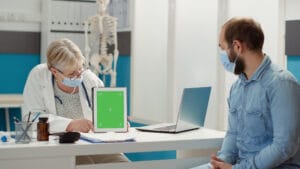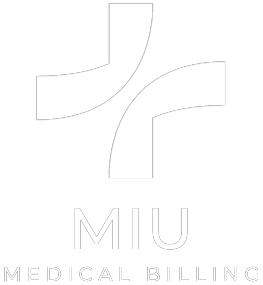Introduction
Running a successful healthcare practice can be complex. There is a lot that goes into it, and one of these is a consistent cash flow that is possible with efficient medical billing and coding. Whether you’re a healthcare provider, a medical biller, or a coder, it’s crucial to understand the value of accuracy and precision in billing and coding. One important aspect of coding is the place of service (POS) codes, indicating where the service was given.
The landscape of telehealth is ever-changing; the Centers for Medicare & Medicaid Services (CMS) came up with POS 10 to distinguish healthcare services provided to patients at home since remote care is increasing in popularity.
MIU Medical Billing provides a comprehensive guide on POS 10 exclusive for 2025. Let’s dive into it and explore POS 10, its correct use, why and how it differs, and how to implement it in the claims to avoid denial issues.
POS 10 in medical billing

Place of Service (POS) 10 refers to telehealth services, which means healthcare services rendered to a patient at their residence. The Centers for Medicare & Medicaid Services (CMS) definition of POS 10 is “Telehealth Provided in a Patient’s Home.” They gave this as an effort to modernize telehealth payment through insurance and give it a distinct identity from other remote care settings. This allows government and private payers to apply location-specific payment rules and regulations.
Comparison between POS 10 and POS 02
POS 02 was used prior to the update and the POS 10 release. Now, both of them have a very different purpose.
Features | POS 02 | POS 10 |
| CMS Definition | “Telehealth in non-home locations” | “Telehealth in the patient’s home” |
| Reimbursement | It is typically facility-based rates | It may differ from POS 02, often at parity |
| Usage scenario | Remote care from schools, clinics, etc. | Remote care where the patient is at home |
| Released in | Before 2022 | 2022 |
The Correct Use of POS 10 in Claims
The level of accuracy matters a lot in coding, and the correct use of POS 10 ensures speedy reimbursements and compliance with insurance rules.
POS 10 can be used by
- Nurse Practitioners
- Physicians
- Therapists
- Behavioral health providers
- Physicians
The required elements for POS code 10 are
- Patient documentation must be mentioned.
- Modifier 95 indicates a real-time interactive audio and visual telehealth visit.
CMS Guidelines and Reimbursement Policy with POS 10
Current 2025 CMS policies are
- POS 10 is needed for telehealth services rendered in a patient’s home.
- Reimbursement rates can be similar to in-person rates for some kinds of services under the Medicare Physician Fee Schedule.
- Few private payers may have their own reimbursement rates.
Common Errors and How to Avoid Denials
Errors and mistakes can cause a lot of problems for a healthcare practice or a provider. The consequences can range from claim denials and delays in reimbursements to even audits. Common billing mistakes include:
- Missing the modifier 95
- Using POS 02 instead of POS 10
- Failing to document information such as patient location
- Software errors overriding POS codes
You can avoid these mistakes simply by
- Training your coding and billing team to understand the intricacies of POS 10
- Regular audits of claims for telehealth visits
- Work closely with an EHR vendor or your billing partner to enforce logic rules.
Tools, Resources, and Software for POS 10 Billing

With time, a lot of resources and software were introduced to make billing more efficient and minimize the chances of errors. You can use the following software that supports POS 10:
- AdvancedMD
- eClinicalWorks
- DrChrono
- Athenahealth
- Kareo
POS 10 in Medical Billing and Coding FAQs
Do all insurance companies accept POS 10?
Yes, most major insurers, such as Medicare, accept POS 10, but you should always check with your local insurers for updated policies.
Is modifier 95 always necessary to use with POS 10?
Absolutely, for most services such as interactive audio/visual telehealth. You should always check payer-specific regulations and guidelines.
Can I use POS 10 only for audio-only telehealth?
If the services are covered under CMS or payer policy for audio-only care, then yes, you can, but often behavioral health codes are used instead.
Conclusion
The world has evolved a lot, especially after the COVID pandemic, and telehealth has risen in popularity since then. Hence, it’s important to know what insurers cover telehealth and what codes are used to refer to telehealth in claims. Hence, staying up to date with billing requirements like POS 10 is essential, and using it correctly not only ensures faster reimbursement but also keeps a consistent cash flow to your practice with compliance. This is crucial, especially in Texas, where insurance policies and audits are strict.
MIU Medical Billing is here to help those who are unsure about how to update their billing systems, and our team of experts is excellent when it comes to accuracy and precision in POS code 10 use.




